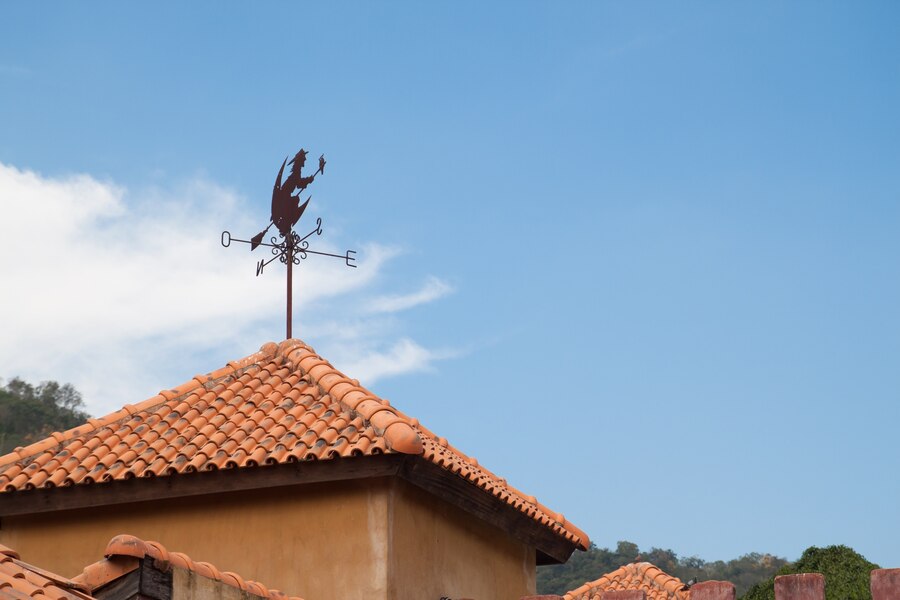How to Spot Sun Damage on Your Arizona Roof Before It’s Too Late
Arizona’s desert climate is synonymous with blazing sun and intense heat. While these conditions might be ideal for sun lovers, they can wreak havoc on your roof over time. Constant exposure to ultraviolet (UV) rays and extreme temperatures can lead to gradual deterioration, leaving your roof vulnerable to leaks, cracks, and expensive repairs. Knowing how to spot the early signs of sun damage can help you avoid costly problems before it’s too late. Here’s a comprehensive guide to detecting sun damage on your Arizona roof and what to do about it.
Fading and Discoloration: The First Visual Clue
One of the most obvious signs of sun damage is fading or discoloration. Roof materials like asphalt shingles, clay tiles, and even metal roofing can lose their original color after prolonged exposure to UV rays. While this might seem like a cosmetic issue, it’s often the first clue that the roof’s surface is being compromised.
– Shingles: If your asphalt shingles appear washed out, it’s a sign that the protective granules are wearing away, leaving them more vulnerable to UV damage.
– Tiles: Clay and concrete tiles may develop a chalky appearance as they weather, indicating surface erosion.
– Metal roofing: Fading paint or a dull finish could suggest that the protective coating on your metal roof is breaking down, which can eventually lead to rust.
Regularly checking your roof’s color and comparing it to how it looked when first installed is an easy way to spot early signs of sun damage.

Cracked or Curling Shingles: A Red Flag
Shingles bear the brunt of Arizona’s scorching heat. As they are exposed to the sun, they expand and contract, and over time, this cycle can lead to cracking or curling. Once shingles begin to curl at the edges, they no longer lie flat against the roof, creating spaces where water and wind can penetrate.
Cracked shingles, on the other hand, are a clear indication that the material is drying out due to prolonged sun exposure. Cracks allow water to seep through, which can lead to leaks inside the home. Spotting these issues early is crucial because a few cracked or curling shingles can be replaced, but if left unchecked, the damage could spread across the entire roof.
Brittle or Broken Tiles: Watch for Crumbling
Clay and concrete tiles are known for their durability, especially in hot climates, but even these tough materials aren’t immune to the effects of the sun. Over time, constant exposure to high temperatures and UV radiation can cause tiles to become brittle.
If you notice pieces of tile breaking off or crumbling around the edges, this could indicate that the material is becoming compromised. Brittle tiles are more prone to cracking during windstorms or monsoon rains, leaving your roof susceptible to leaks. It’s a good idea to inspect the tiles after particularly hot spells or strong storms to catch early signs of deterioration.
Peeling or Blistering Roof Coating
In Arizona, many homeowners invest in reflective roof coatings to protect their roofs from the sun’s harsh rays. However, these coatings themselves can suffer from sun damage over time. If you notice peeling or blistering in the coating, it means the sun has broken down its protective qualities.
Blistering occurs when heat causes air pockets to form under the coating, eventually leading to cracks. Once the coating is compromised, it’s no longer effectively reflecting the sun’s rays, and the roof underneath becomes more vulnerable to heat and UV damage. Regular inspections and reapplication of coatings can help maintain your roof’s protection.

Granule Loss: A Warning for Asphalt Shingles
If you have an asphalt shingle roof, granule loss is a major indicator of sun damage. These small, gritty granules provide protection from UV rays and add an extra layer of durability to your shingles. However, over time, the sun can cause these granules to wear away, leaving your shingles exposed.
You may notice granules collecting in your gutters or scattered around your home’s foundation. While some granule loss is normal as your roof ages, excessive loss means that your shingles are nearing the end of their lifespan and can no longer protect your home effectively. Without the granules, shingles dry out and become brittle, leading to cracks and eventual leaks.
Warping and Sagging: A Structural Concern
Extreme heat doesn’t just affect the surface of your roof—it can also impact the underlying structure. Prolonged exposure to high temperatures can cause roof materials to warp or sag. While minor warping can be difficult to spot, significant sagging is a red flag that your roof may need immediate attention.
If your roof appears uneven or has noticeable dips, it’s important to consult a professional as soon as possible. Sagging can indicate deeper structural damage, including weakened supports or rotting materials beneath the surface. Catching this early can prevent the need for more extensive repairs down the line.

Metal Roof Expansion and Contraction
Metal roofs are often chosen for their durability and ability to reflect heat, making them popular in Arizona’s climate. However, metal is prone to expansion and contraction due to temperature fluctuations. In extreme heat, the metal expands, and when it cools at night, it contracts. Over time, this constant movement can cause panels to loosen, fasteners to wear out, and seams to open.
Regular inspections are essential to ensure the integrity of your metal roof. If you notice gaps, loose screws, or any unusual movement in the panels, it’s important to address these issues promptly to prevent leaks and other forms of damage.
Leaking: The Most Serious Sign
The most obvious—and urgent—sign of sun damage is leaking. If you notice water stains on your ceiling or walls, it’s a clear sign that your roof has been compromised. While leaks can occur for various reasons, sun damage can weaken roofing materials to the point where they no longer provide an effective barrier against water.
Arizona’s rare but intense monsoon rains can exacerbate this problem, leading to significant water damage if leaks aren’t repaired quickly. At the first sign of a leak, it’s crucial to schedule a professional roof inspection to determine the extent of the damage and prevent further issues.
Protecting Your Roof from the Arizona Sun
While it’s impossible to avoid the Arizona sun, you can take steps to protect your roof from its damaging effects. Regular maintenance, including professional inspections, cleaning gutters, and applying reflective roof coatings, can extend the lifespan of your roof. Additionally, making timely repairs at the first sign of damage can prevent small issues from turning into costly problems.
By staying vigilant and knowing what to look for, you can spot sun damage before it’s too late—and ensure that your Arizona roof remains a strong defense against the elements for years to come.
Arizona’s intense sun may be unavoidable, but serious roof damage doesn’t have to be. By keeping an eye out for fading, cracking, blistering, and other signs of deterioration, you can address sun damage before it leads to bigger, more expensive problems. Regular maintenance and prompt repairs are key to ensuring your roof stands up to the desert’s extreme conditions for the long haul.


Recent Comments